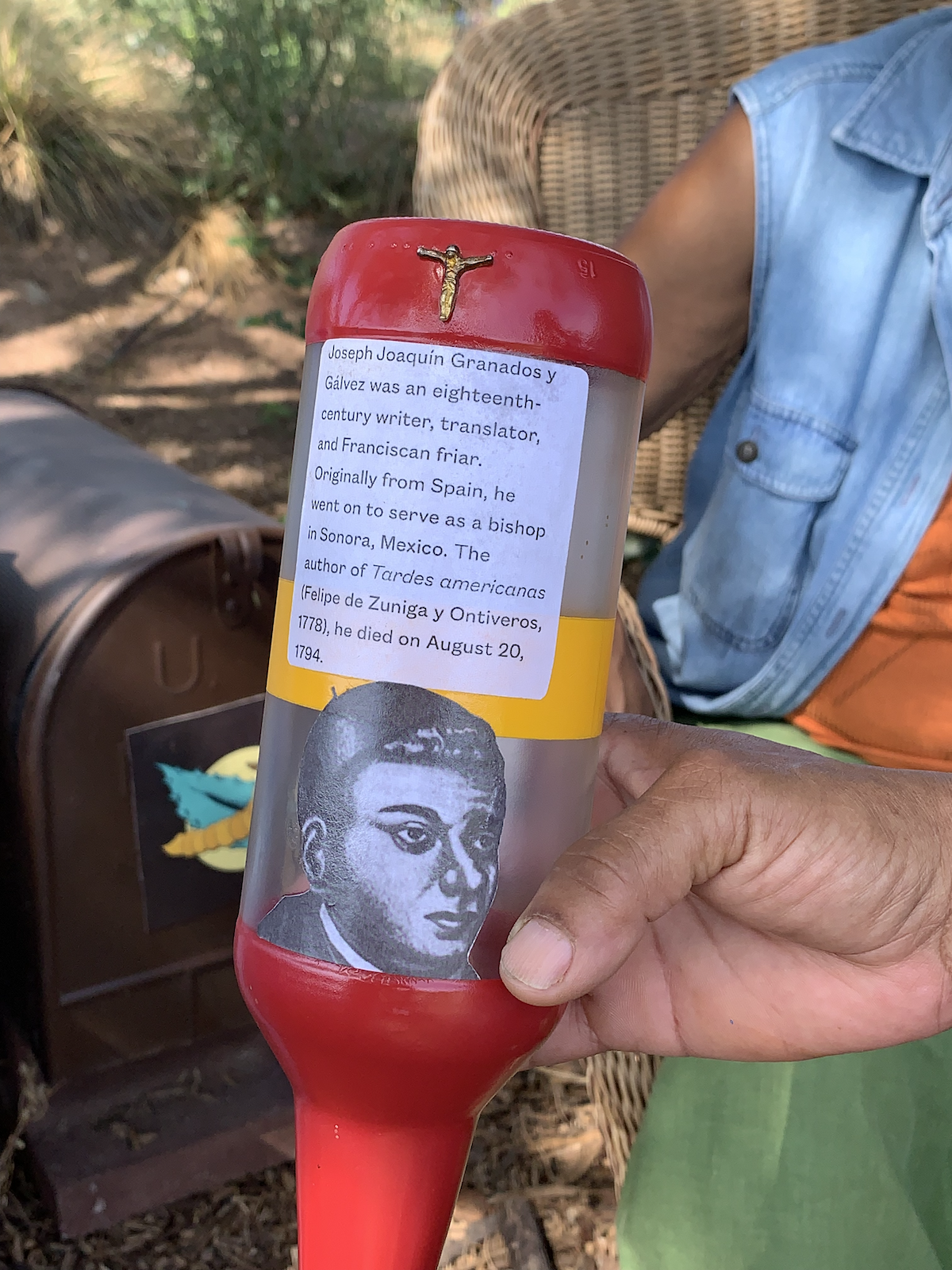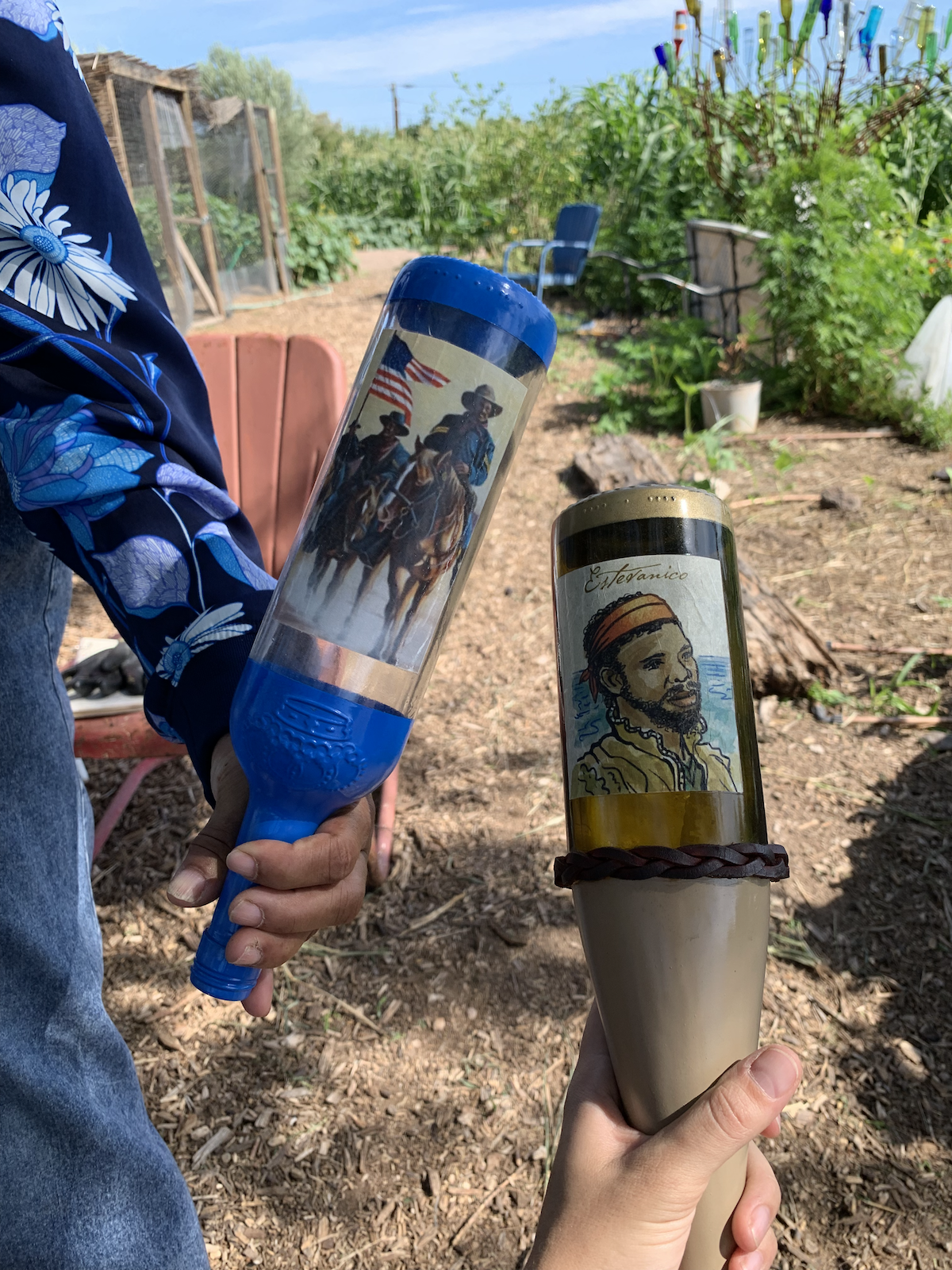A Conversation with the Women Behind the Africa in the Americas Garden
This story begins largely with Sidney Engs, twin sister to Stephanie, who are both passionate volunteers at Mission Garden. For the last nine years, Sidney has been thinking and planning for how to bring an “Africa in the Americas” garden to life. After years of thinking on this idea, two years ago their research and plans really took off. They invested time in planning, recruiting committee members, and researching local history, this year they were able to celebrate the inauguration of the gardens. Now after only a few months, the Africa in the Americas garden is already thriving.
Read our interview with Sidney, Stephanie, and Kim, below.
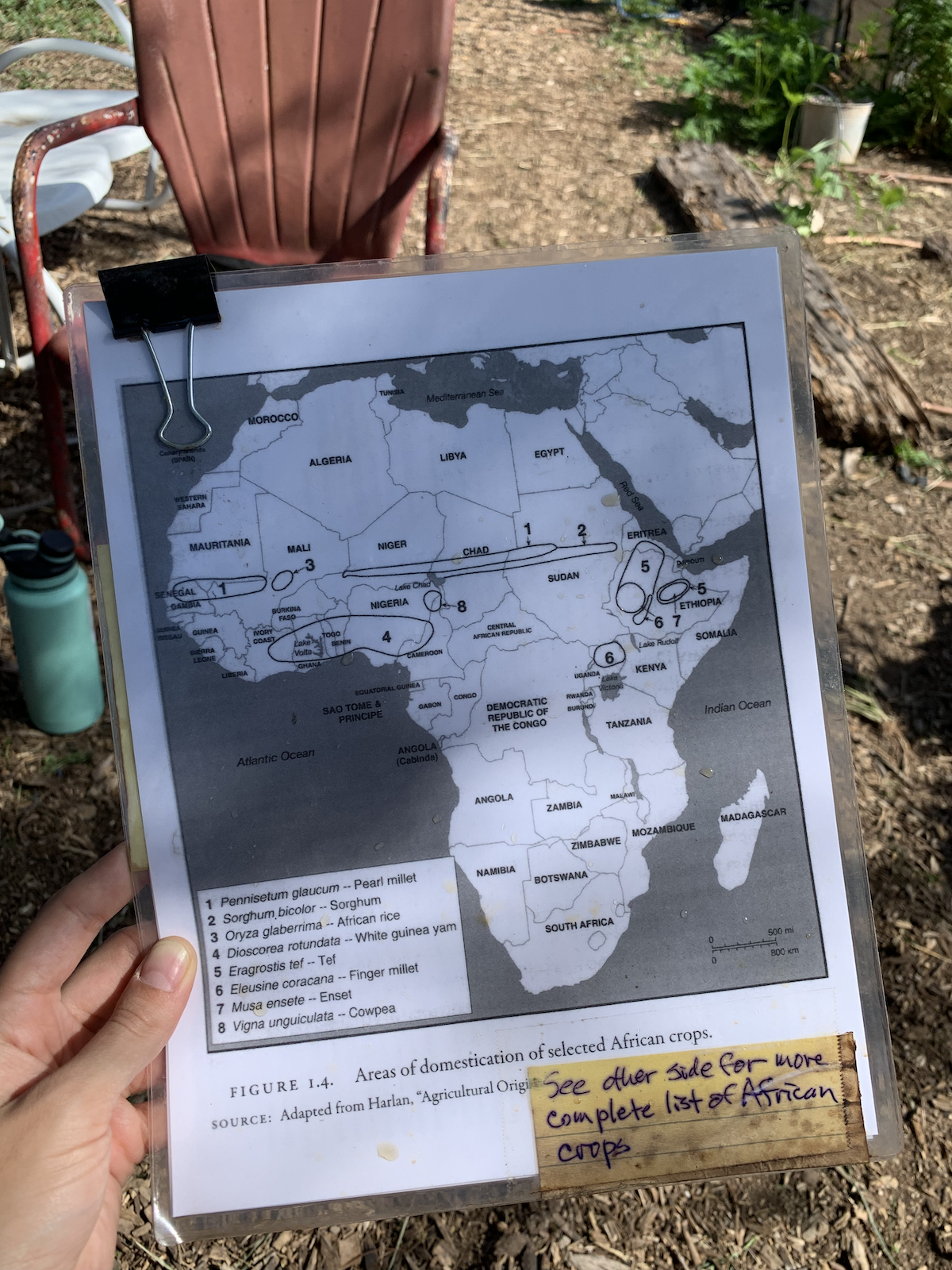
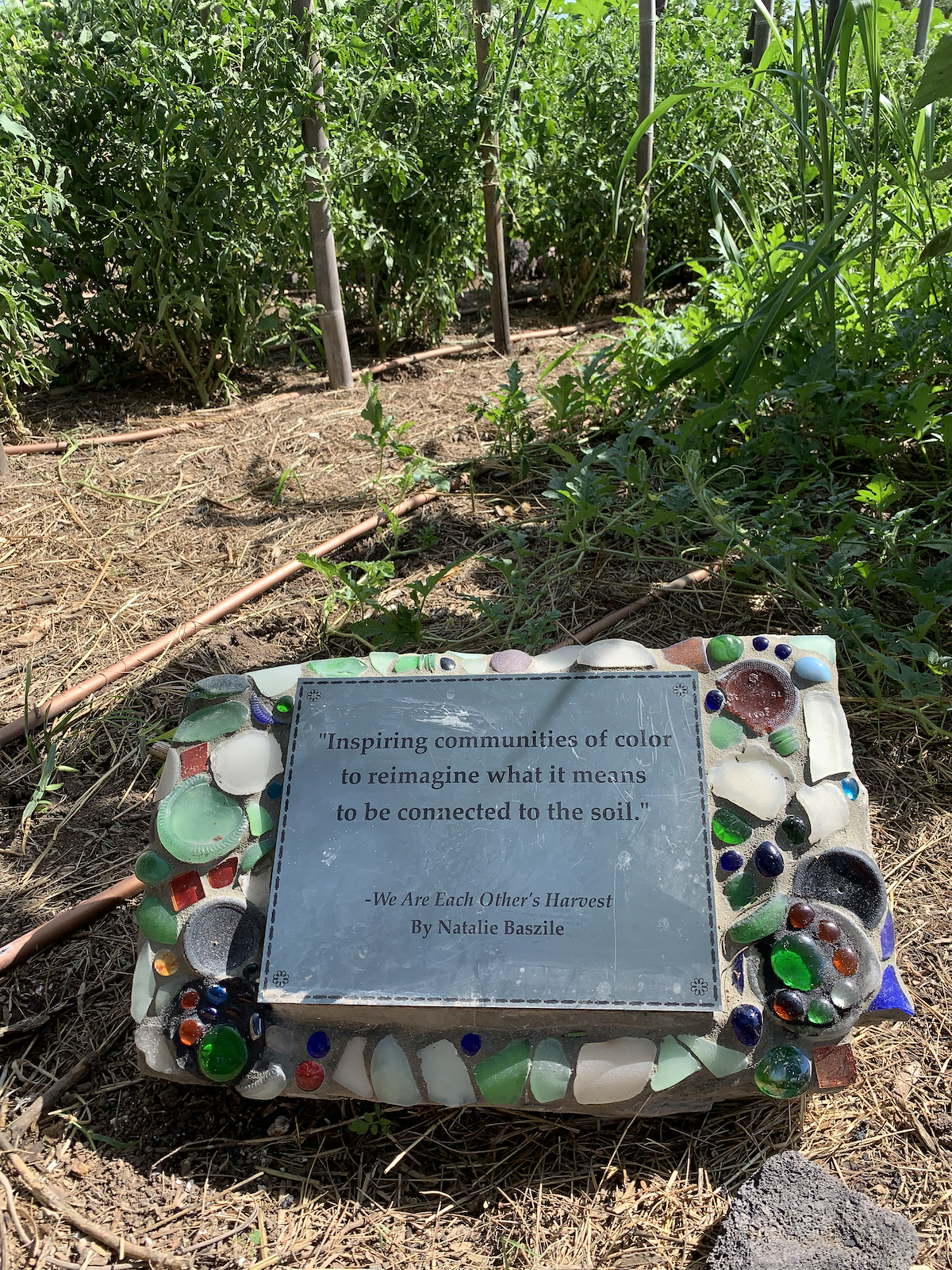
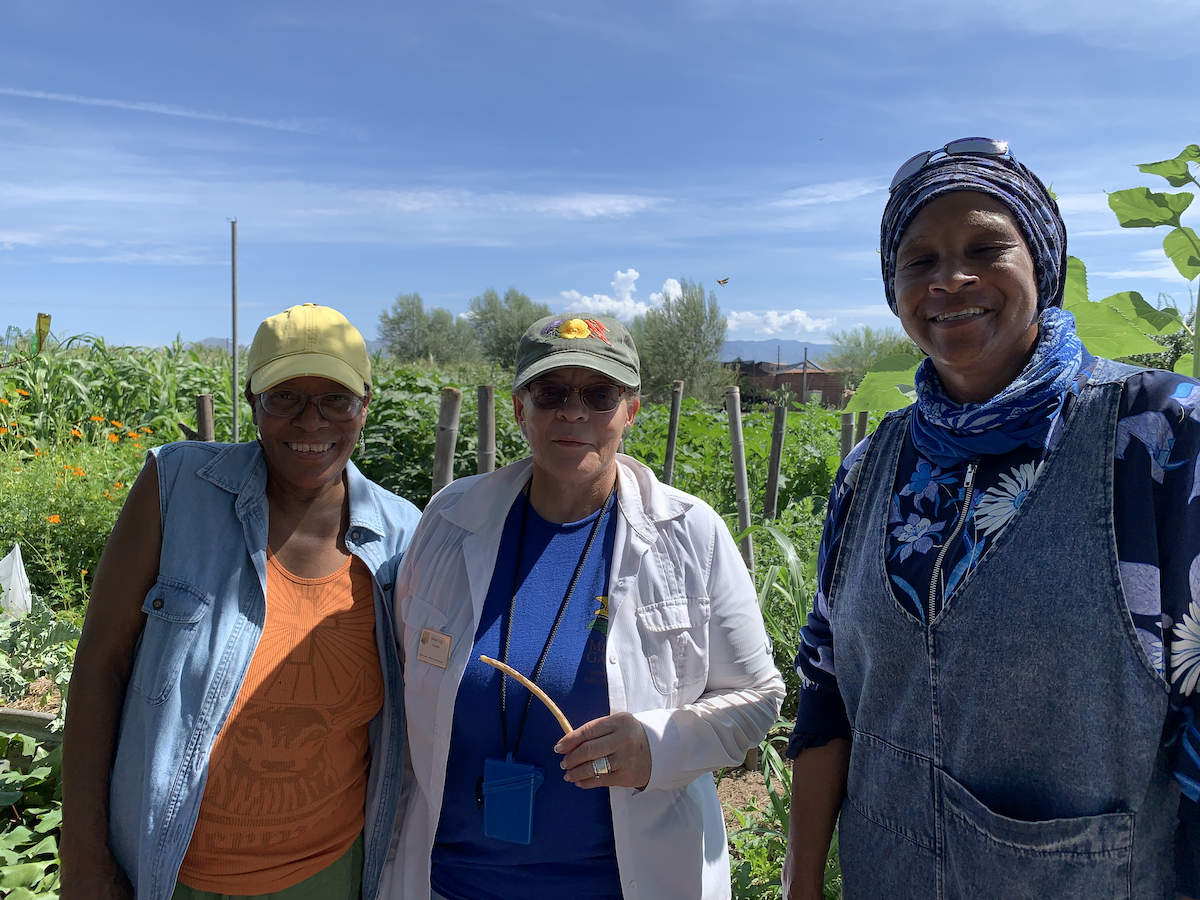
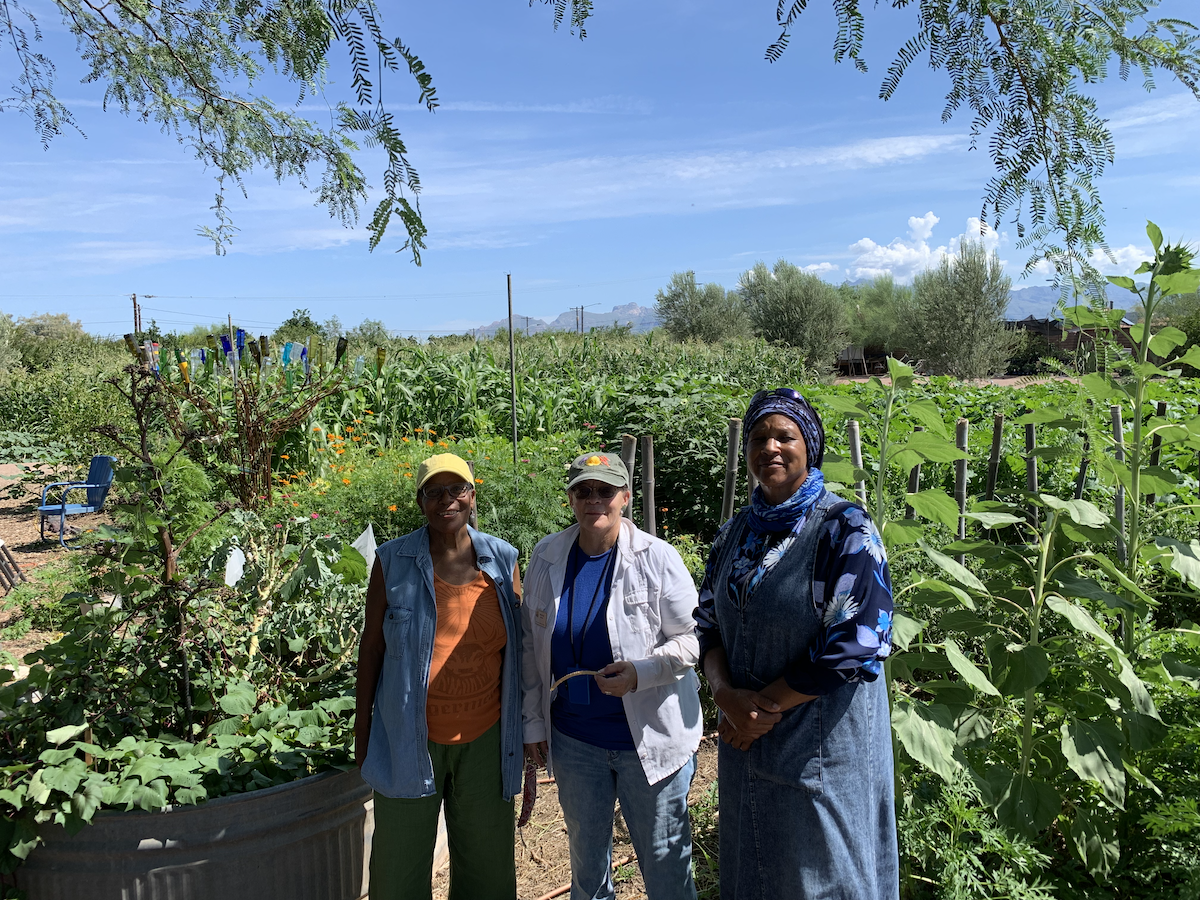
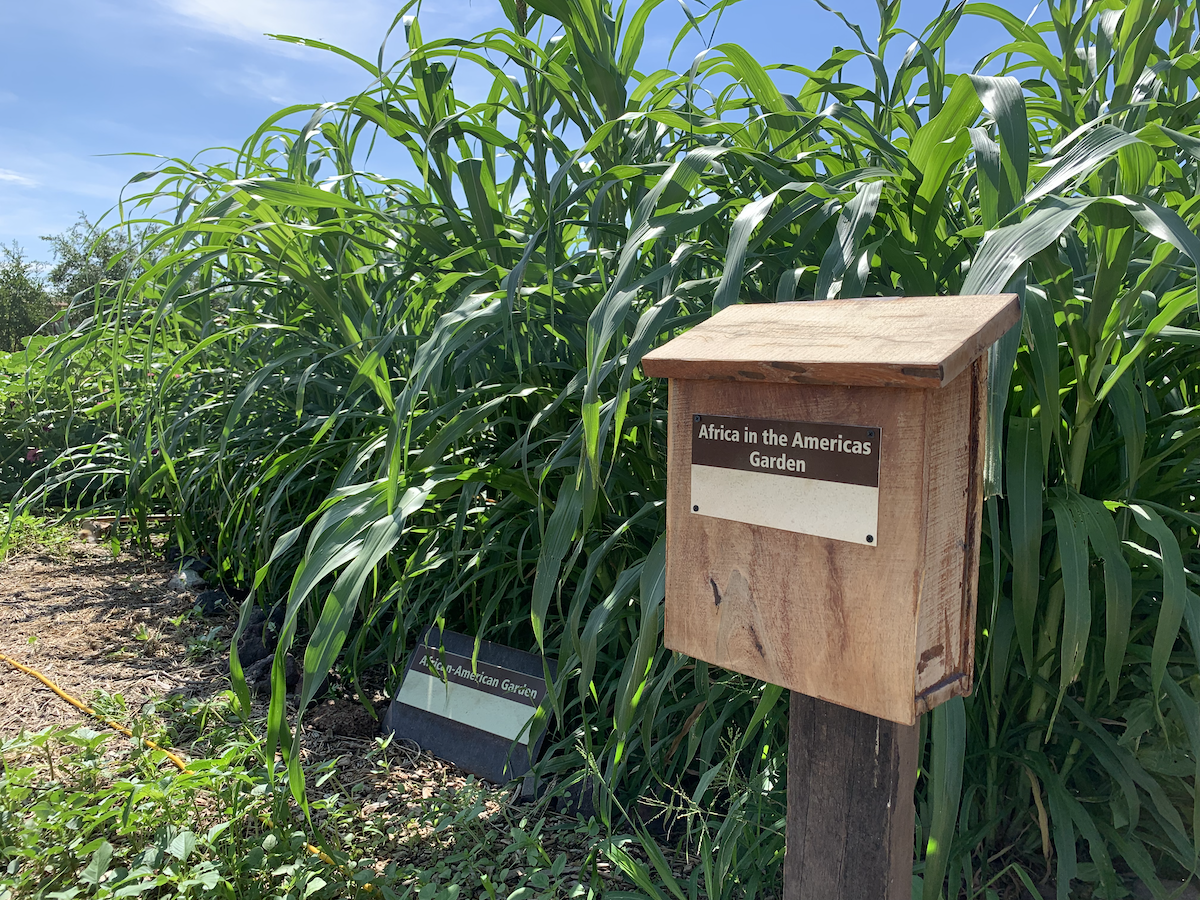
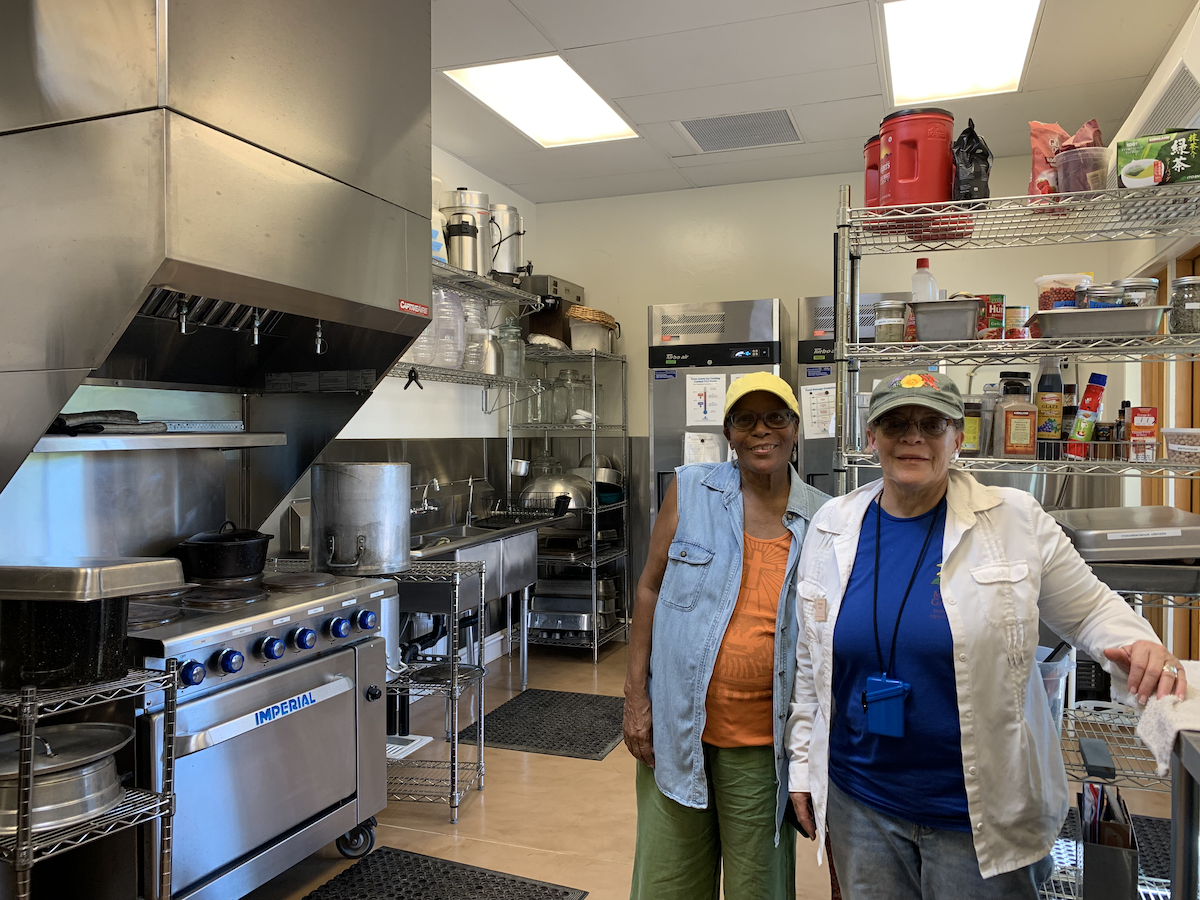

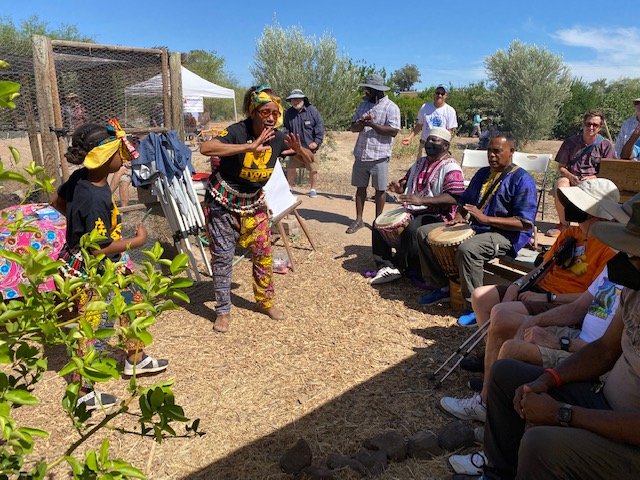
How did the Africa in the Americas (AITA) garden get started?
Sidney: We invited people to come out and put down some seeds so they feel they’re a part of this garden. Probably two years ago the committee started to form. Our meetings are interesting, we discuss a lot of cultures here in Tucson, as well as other places too. African American culture, and bringing info to each other to learn and grow the garden. I knew it was an idea and I had been going “when is this going to happen?” and then, you know, it started happening!
Who are the founding committee members?
Sidney: Kim, Stephanie, Floyd Gray, have all been an instrumental part…plus Emily Rockey at Mission Garden has been a big help.
Kim: I’ve only been here three years and I just happened to come upon this. I was just blessed to be here, and they were just starting it up. I was excited that I was even included. I would just like to read a little bit of this. People of African American descent have been exploring the San Pedro and the Santa Cruz Rivers since as early as 1539, when Esteban the Moor traveled north to Zuni, the contingent of soldiers who arrived in Tucson in 1775 to establish the Presidio, including four persons of African descent.” I just wanted to interject that because that’s what their foundation was, and the foundation for all of this is from Sidney and Michael Engs who did a lot of research and we really had to fight for everything, like we had to prove that the Buffalo Soldiers were here.
How did you learn about Mission Garden?
Sidney: Let’s see. I’ll have to think back. I started out as a volunteer, because I lived seven minutes from here so it was my grounds to garden. I’m a backyard gardener, I’m attracted to this garden, and it’s really close to my home.
Stephanie: In my neighborhood, about three-quarters of my block come here to garden, partially because Sidney makes them. They say thank you so much for introducing us to this wonderful space, and right now it’s really at its best. It’s near its best. As soon as we pick something it’s at its best, and then it becomes even more interesting when you cook it. I’m not even naturally a volunteer, I never signed up, that comes with expectations. I don’t want to do anything I don’t want to do. Sidney and I, there was an event here and they needed some people in the kitchen to help out and I was like “oh.” I went into the kitchen and saw how they did things and just helped out. We’ve done three or more events through the kitchen. We’ve worked really hard to get the kitchen in its best possible state so we can really do some great stuff. It’s one thing to grow the food, to cook the food. But then you have to have the people to eat the food. It’s a wonderful, wonderful, progression.
Kim: And let me tell you, we have the dedication, and these ladies here they’re being real real humble but they threw down. When I say cook, they cook cook cook cook cook. They’re sitting there. They threw down. Straight up. Floyd brought his greens. They tore it up. You ask anybody that attended that function and its the best food that’s ever come out of this garden, and it came right from here, man that was some good eating ladies. They made squash casserole, Barbara’s okra, collard greens, peach cobbler, lemon meringue, cornbread, red beans, black-eyed peas. Jamaica [hibiscus] to drink.
Stephanie: We started running out and it was starting to get really hot out. Lisa, the woman who’s in charge of the kitchen there, who does a wonderful job, she just pulls a rabbit out of a hat. She added a syrup that was made here in the garden, so we had really good, refreshing drinks from the stuff she collected here in the garden. They were awesome.
Sidney: Peach juice in the hibiscus.
Kim: And then we had the African dancers here from the Barbea Williams Performing Company. They went around the whole garden.
Stephanie: It is amazing, she [Lisa Grenier] is a chef also, and she was instrumental in keeping the kitchen organized. We had so many different people that came and helped. It only really accommodates four. Try getting four ladies — four chefs — in there. It could’ve been ugly. All it was, was a beautiful way to bring food to the table and that’s what we did. We brought food to the table. With music, bringing cultures together…on the day that we did the inauguration, this [pointing to the gardens behind] was completely empty.
How many people attended the inauguration?
All at once: There were a couple hundred people out here. Over 150 people maybe. A good size gathering
Tell us about the bottle tree?
Stephanie: The bottle tree is a Southern kind of way of keeping your garden and your house safe. If it starts getting really windy, or something bad is going to happen, usually the bottles will knock against each other. Something really special about this tree, there are two pieces that Kim had made that are on the tree:
Kim: The tree was built by Diane Hopkins.
What’s growing in the AITA gardens right now?
Sidney: Watermelon, 60-day O’odham corn, cosmos, collard greens, spinach, Cherokee purple tomatoes, moringa, Meyer lemons, millet, sorghum, and buckwheat.
Is there going to be an anniversary party?
Sidney: If I have anything to do with it!
Kim: We’re going to be celebrating as much things as we possibly can.
Stephanie: We are a party-ville down here.
Kim adds: Did you notice there’s an outline of Africa? You almost can’t notice it because of all of the growth. We were trying to make it so that you can see it from A-mountain. Reading from a print-out available on the walking tour: “Engs, a member of the gardens committee, explains that incorporating of the shape of the continent of Africa into the garden shows honor for the people it represents and their histories. You can explore the cultural history of people in America of African descent and the plants that took root here at the garden. Laid out chronologically north to south, it spans the time of first African person here, Esteban the Moor in 1539, to the Spanish colonial period late 1600s to early 1800s, Mexican period 1821 to 1854, and territorial period 1854 and 1912, Arizona statehood 1912 to present.”
Are you open to having more committee members and volunteers?
Sidney: Yes, always open!
What’s next for the AITA gardens?
We want to see it thrive. It’s one thing to grow food, but you have to eat it. The best way to eat it is by having gatherings.

